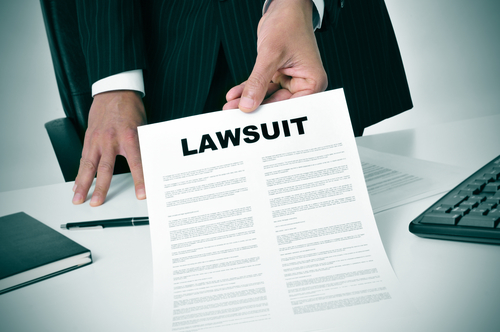By Edward L. Birk and Crystal T. Broughan
In a recent post, we wrote about the fast-paced world of broadcasting, made even faster by the Internet age, and how this has led to the temptation of pulling imagery from websites without confirming copyright and securing proper permission. The reuse of online content is very easy to accomplish. The consequences can be very painful to the bank account.
According to Federal court listings, a comparison of annual copyright proceedings – which accounted for nearly a quarter of all of those pertaining to intellectual property – have jumped 49% in the last few years (2014 vs. 2018). And as of February 14 of this year, fourteen more proceedings have already been filed.
Templated Demand Letters, Cookie Cutter Lawsuits, and Customized Damages
This increase could be due, in large part, to the fine-tuning we’ve seen among litigation playbooks over that time. Large commercial photo archives have diligently worked to protect their property through the threat of litigation. Specifically targeting broadcasters, it is no longer uncommon for freelance photographers to engage law firms and tech vendors in crawling the web for images to which they own the copyright.
When images are found on broadcaster websites, a templated demand letter is sent to the infringing broadcaster with a threat of litigation, typically including settlement amounts far beyond what could reasonably be recovered in court. If the demand is refused, a “cookie-cutter” lawsuit is filed, and suddenly your legal team is on the phone and you’re facing the risk of being tied up indefinitely in litigation.
It seems only a handful of lawyers is responsible for hundreds of nearly-identical case filings, and the courts are clearly displeased, with some judges going so far as describing these tactics as “borderline extortionate.” Despite the judicial irritation, the incidence of these types of case filings continues to grow. The best plan of action for news stations is to remain diligent in protecting themselves from falling into this completely avoidable trap.
Avoiding This IP Lawsuit Trap
There are four primary safeguards that should be in place to protect your organization from this common trap:
Secure your sources. If you are unsure about the origin of an image or photo and are unable to fully confirm that the source directly owns the copyright prior to use, pass on it. This will include about 99.9% of anything you may want to download directly from the web.
Instead, play it safe with reputable stock photo agencies or referenced creative agencies that can provide proof of suitable licensing or rights permitting usage of images you would like to use. There are typically fees or costs associated with these types of agreements, but they are far less than the cost in time, money, and resources required to defend or settle claims.
Shore up contracts. Once you have located an agency and negotiated a licensing and use agreement appropriate to your broadcasting needs, be sure it includes all the necessary protections in the event your partnering agency becomes the subject of litigation.
Your organization’s legal team – including your intellectual property attorney and media law attorney – should be part of the licensing process from the beginning, but it is imperative they are involved in contract development and review at a minimum.
Keep a paper trail. Even when you believe you have taken all the right steps, things can fall through the cracks. You must be prepared, because compensation amounts are only ever as high as the defendant’s pockets are deep – and chances are, your broadcasting resources are probably far more enticing than the smaller partnering agency they may have gone after instead.
Whether you decide to use direct-source images or contract out for access to stock images, a paper trail is what your legal team will need to defend you in limiting any damages.
When in doubt, ask. If you have found an image you absolutely need to use, but are not sure whether you should, you have to ask. Your intellectual property attorney and media law attorney are there for exactly these situations. As looming as your deadline is, as tempting as it may be, as frustrated as you may end up if you learn you cannot use that perfect image, it pays far more to be protected.
If you are a broadcaster with questions regarding your specific circumstances for publishing third party images, reach out to the Marks Gray legal team. Until then, good luck and happy photo hunting.
